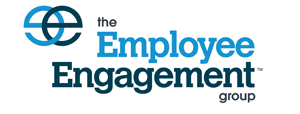By: The Employee Engagement Group

Employee engagement is a critical factor that influences an organization’s success. Engaged employees are not only more productive but also more likely to stay with the company and contribute positively to its growth. However, measuring employee engagement can be challenging. Let’s review various methods and tools for measuring employee engagement, including surveys, feedback sessions, and data analysis.
Why Measure Employee Engagement?
Before delving into the methods and tools, it’s essential to understand why measuring employee engagement is vital. Employee engagement is more than just a metric; it’s a window into the overall health of your organization. Here’s why it matters:
- Improved Productivity: Engaged employees are more motivated, leading to increased productivity and better quality of work.
- Reduced Turnover: Engaged employees are less likely to leave your organization, saving you recruitment and training costs.
- Enhanced Innovation: Engaged employees are more likely to offer creative solutions and ideas, driving innovation within the company.
- Positive Company Culture: High levels of engagement contribute to a positive work culture, fostering collaboration and teamwork.
Now, let’s explore the methods and tools for measuring employee engagement:
1. Employee Engagement Surveys
Employee engagement surveys are a popular and effective method for gauging employee sentiment. These surveys typically consist of a set of questions designed to assess various aspects of engagement, such as job satisfaction, teamwork, and communication. Here’s how to use them effectively:
- Designing the Survey: Carefully craft questions that align with your organization’s goals and values. Include a mix of closed-ended (quantitative) and open-ended (qualitative) questions.
- Survey Frequency: Conduct regular surveys to track changes in engagement over time. Annual or semi-annual surveys are common, but you can adjust the frequency as needed.
- Anonymous Responses: Ensure that employees can respond anonymously to encourage honest feedback.
- Actionable Insights: Analyze the survey results to identify areas that require improvement. Use the data to develop actionable strategies for enhancing engagement.
2. Feedback Sessions
Feedback sessions provide a more direct and personal approach to measuring engagement. These can include one-on-one meetings between employees and managers, team discussions, or focus groups. Here’s how to make the most of feedback sessions:
- Regular Check-Ins: Encourage frequent conversations between employees and their supervisors to discuss concerns, challenges, and career goals.
- Structured Feedback: Create a framework for feedback sessions, allowing employees to express their thoughts and feelings openly.
- Manager Training: Train managers to actively listen and provide constructive feedback. Managers play a pivotal role in driving engagement.
3. Data Analysis
Data analysis involves examining various data points to gain insights into employee engagement. This can include analyzing turnover rates, absenteeism, performance metrics, and even social network analysis within the organization. Here’s how to harness data for engagement insights:
- Key Metrics: Identify key performance indicators (KPIs) related to engagement, such as turnover rate, attendance, or productivity. Regularly monitor these metrics to spot trends.
- Exit Interviews: Analyze feedback from employees who leave the organization to identify common reasons for departure.
- Pulse Surveys: Conduct short, frequent surveys to gather real-time feedback on specific topics or events within the organization.
- Benchmarking: Compare your engagement metrics to industry benchmarks to gain context and identify areas for improvement.
Measuring employee engagement is a vital step in fostering a positive workplace culture and achieving business success. By utilizing methods such as surveys, feedback sessions, and data analysis, organizations can gain valuable insights into their employees’ engagement levels and take meaningful actions to enhance them. Remember that employee engagement is an ongoing journey, and continuous measurement and improvement are key to maintaining a thriving workforce.
The Employee Engagement Group offers a proven track record of designing comprehensive and customized employee engagement surveys tailored to your organization’s unique needs. With our expertise, you can gain actionable insights, improve workplace satisfaction, and boost productivity, ultimately driving long-term success.
Contact us today to learn more: [email protected]



